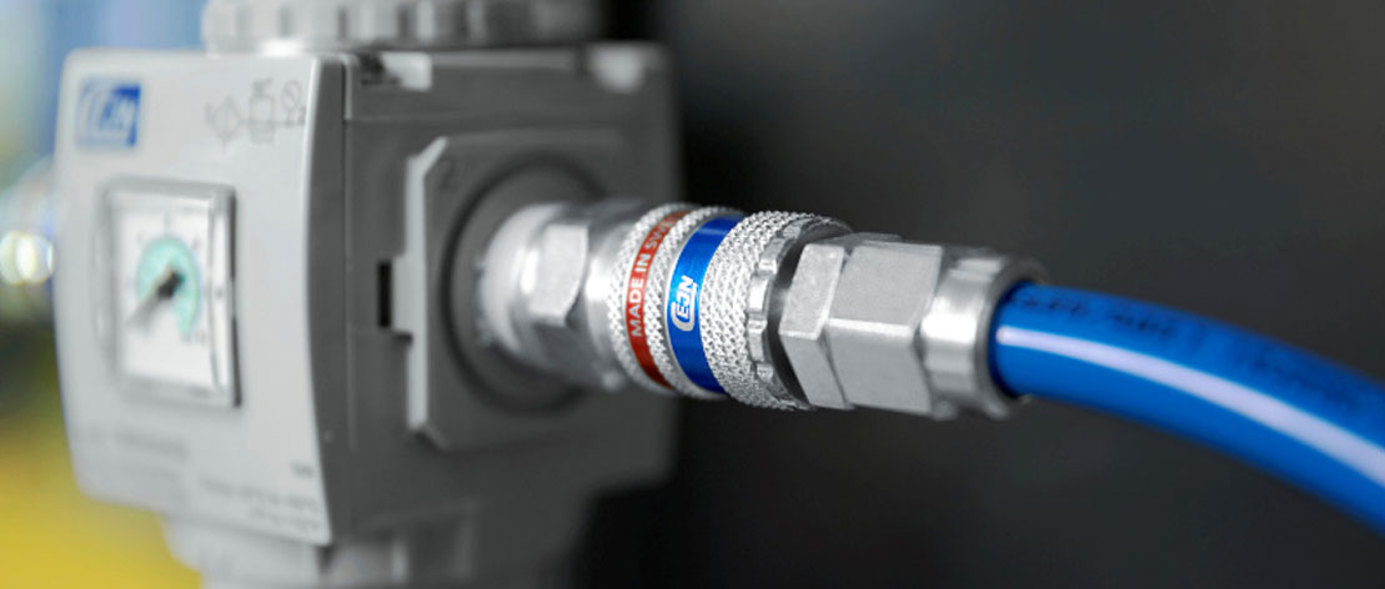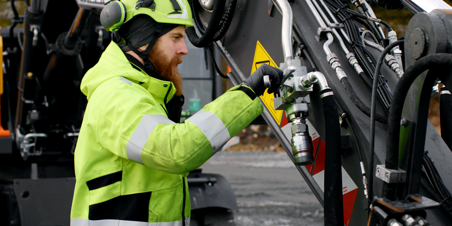Minimizing costly air leaks in compressed air systems

Is your compressed air leaking? It's a good time to check your quick connect couplings to start saving energy.
Air leaks are possible in any part of the compressed air system but are most likely found at or around quick connects, thread connections, unions, seals/sealant points, couplings, gaskets, hoses, valves, hose welds, tubes, fittings, air dryers, pipe joints, quick disconnect fittings, FRLs (filter/regulator/ lubricator), condensate/drain traps, valves, and flanges.
The rate of air loss is proportionate to the air pressure and volumes within the leaking system (increasing with higher system pressures/volumes), and the size of the leak on the hose or fitting. According to the U.S. Department of Energy, the cost to produce 1,000 cubic feet of compressed air at 100 PSI costs between 18 to 32 cents per foot (meaning a 1/16” hole in the hose can cost around $600/yr USD).
While an air leak can cost you, there is more to the problem than an overly inflated electric bill. Air leaks also cause the compressed air system to lose pressure, which will reduce the performance of air tools and other pneumatic equipment. That inconsistency in air pressure can increase production times and negatively affect the quality of the end product.
When the air pressure drops below optimal PSI levels for air tools and pneumatic machinery, the immediate solution may seem as simple as increasing the pressure at the air compressor. Increasing the pressure over the entire compressed air system to increase the air pressure of a single line is not recommended. Increased pressures at the compressor will require it to cycle more frequently, leading to even higher electrical costs, and potentially decreasing the lifespan of the costly compressor. The increased pressures could also lead to the premature failure from otherwise intact system piping and pneumatic fittings. When more parts of the pneumatic system start to fail, the expenses can mount up in the form of maintenance expenses, and downtime / line shut downs.
When energy costs reach critical levels or air supply issues can no longer be ignored, some manufacturers opt to contract an outside firm to do an audit of the compressed air supply system. These companies perform calculations using volumetric flow rates (CFM), operating pressure (PSIG), compressor cycle timing, atmospheric pressure, and correction factor figures. They will use equipment like downstream pressure gauges, and ultrasonic leak detectors. In the end, the customer will be provided a list of shortcomings and recommendations to optimize the compressed air system.
If considering an audit, first check the last 30 feet of your air hose lines and fittings. This part of the air-line/piping gets the most use, and are thus at a greater risk of damage due to wear and tear. Remember that the ideal air leakage rate is zero, and if you hear an air leak, you should get it repaired as quickly as possible. The ends of the lines are often fitted with quick connect couplers (quick disconnects, push to connect fittings). These couplers are connected and disconnected countless times, dragged across the shop floor, and dropped on hard concrete. If a quick connect is leaking, always replace it using the best quality quick connect to reinforce the robust nature and durability of the entire compressed air system.
When walking the air lines to locate leaks, the sheer volume of air leaks may seem overwhelming for a maintenance department that is already working hard to meet their daily maintenance requirements. No matter where a leak is located, or how small and seemingly inconsequential it may look, those air leaks are costing you money. Staying on top of air leaks isn’t easy, but as long as compressed air is a staple in the manufacturing, forestry, chemical, automotive, food & beverage, pharmaceutical and electronics industries, the best practice is to keep repairing air leaks to keep these systems running as safely and efficiently as possible.
Related Stories

Step-by-step guide: How to change the seal on CEJN TLX coupling
Using products that last is a sustainable choice for both the wallet and the planet. Rather than disposing of a product once it reaches the end of its service life, we offer a wide range of spare...

Step-by-step guide: How to install CEJN TLX on hydraulic attachments
In heavy-duty applications, the failure of quick-connect couplings often comes from high surge flows. These surges can lead to seal failures and machine damage, resulting in costly leakages and machine downtime. CEJN TLX is a super-duty coupling solution specifically designed to withstand the...

Compressed air optimisation: 5 common leak sources in compressed air systems
Compressed air systems offer a versatile and efficient power source within many industries. High reliability and a favourable cost/performance ratio have kept the compressed air solutions a top...